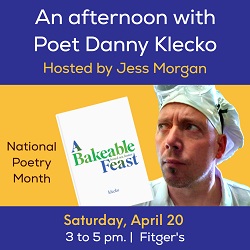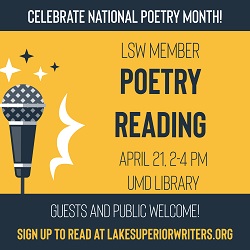I. Was. Running.
 On a mellow midsummer evening in 1992 — back when the Whole Foods Co-op was still next door to the Chester Park Laundromat at Fourth Street and Fifteenth Avenue East — I emptied a big mesh bag full of dirty laundry into three or four front-loading washers, tied my apartment key (for the basement of 1516 East Fourth Street, a little more than a block away ) to the hockey-skate lace holding up my cutoff UMD sweats, and started jogging up the east side of the Chester Creek trail. My plan was to take that side up to Chester Bowl, follow the pavement back to the soccer field, then reverse the process down the west side of creek and return just as the wash cycle ended. The laundromat wasn’t crowded, but I still didn’t want to be the guy who takes up a bunch of machines then disappears. I also don’t like people touching my stuff, even if it’s just to move my wet clothes into a rolling basket with a janky wheel or two so they can use the washer.
On a mellow midsummer evening in 1992 — back when the Whole Foods Co-op was still next door to the Chester Park Laundromat at Fourth Street and Fifteenth Avenue East — I emptied a big mesh bag full of dirty laundry into three or four front-loading washers, tied my apartment key (for the basement of 1516 East Fourth Street, a little more than a block away ) to the hockey-skate lace holding up my cutoff UMD sweats, and started jogging up the east side of the Chester Creek trail. My plan was to take that side up to Chester Bowl, follow the pavement back to the soccer field, then reverse the process down the west side of creek and return just as the wash cycle ended. The laundromat wasn’t crowded, but I still didn’t want to be the guy who takes up a bunch of machines then disappears. I also don’t like people touching my stuff, even if it’s just to move my wet clothes into a rolling basket with a janky wheel or two so they can use the washer.
I wasn’t taking classes that summer, so I’d probably thrown a small stack of unread Sports Illustrated issues on top of the dirty clothes along with a jug of Tide. I assume my plan for after the jog was to transfer all the clothes into one or two of the laundromat’s huge, nuclear-heat dryers, grab some chocolate-covered almonds and a fizzy drink at the Co-op, and settle in to read about sports things that were starting to seem a lot less important than they had seemed since I was a little boy.
Good sports writing about more than sports is the stuff that had drawn my attention since elementary school, when Grandma Eva started giving me an annual SI subscription every Christmas. I really liked the long stories that focused more on people and culture and ideas than on stats and player trades and the stuff blowhards now shout about on TV and the radio. I should probably start reading the Best American Sports Writing anthology series again. Or maybe re-buy and re-read (if for no other reason than the story “Popper”) the George Plimpton anthology I once owned when I thought I was preparing for a career as a newspaper or magazine sports columnist.
I wish I could find a copy of a specific first-person essay that ran in a 1990 issue of SI. It was by a woman a few years older than I was at the time, in my sophomore year of college; she was reflecting on an experience she’d had in a crew practice during her own college years — trying to express something about a brief moment of contemplative rest in a shell with her mates, when she realized how much that exact moment’s ephemeral experience, and everything associated with it, would mean to her when she was older. I remember it was the first time I’d read and looked up a definition for the word “preternatural.” As a college football player who spent a lot of idle (and active) practice time ruminating — simultaneously lost in anxious 19-year-old cluelessness and perhaps preternatural insight about what having played football would mean to my teammates and me — I identified deeply with what she was saying and I remember appreciating how she said it. I wish I’d have torn out the page and saved the piece. I used to save a lot of things like that, but in the last 15 years or so I’ve thrown boxes and folders full of such stuff into the recycling bin: high-school yearbooks; college notebooks (full of very few notes but quite a few transcriptions of favorite song lyrics); a giant cardboard portfolio of construction-paper turkeys and other art projects I drew and made as a little kid; concert-ticket stubs; a Wally the Beer Man trading card; all sorts of photos; just a bunch of random ephemera I’d held onto in some cases since high school, and that always just helped me feel more melancholy than I generally already do. I miss almost none of it. But I’ve spent a lot of time searching in vain for that essay. It’s not the least-productive way I’ve spent time on or off the internet. At this point I almost hope I don’t find it, because if it turned out not to be what I remember it to be, the disappointment wouldn’t kill me but it also wouldn’t be a neutral experience. I feel some things too deeply.
On that summer ‘92 evening, I’m not sure why I didn’t plan to keep jogging after loading the dryers. Probably because dryer cycles were a lot shorter than washer run times. Maybe because I just felt like doing a short workout that day. Maybe because up to the park and back was still a fairly long jog for me in my progress as a runner.
I know (or at least I think I know) I started jogging in summer 1992, almost exactly a year after I’d quit the UMD football team. In those 12 or 13 months I’d stopped doing any sort of consistent exercise but kept eating as I had since I was about ten years old: with abandon, mindless of anything other than what felt comfortable, tasted good, and would help me bulk up for football. From junior high until I quit playing I literally tried to gain weight with every meal. I played at about 185 my last two years of high school. As a college freshman and sophomore I struggled to reach and stay above 200. That was a big deal because my job was to intimidate and block guys who weighed somewhere on either side of 260, either were mean or knew how to get there, spent very little practice time lost in soft reverie, and had absurd strength-to-body-weight ratios. I was way too light, and I lacked the meanness and toughness and strength to make up for it. Maybe a lot of things would have been and felt different if I’d have spent time developing those characteristics instead of just trying to get big.
A year after quitting I’d easily plumped up to a doughy 235. After catching sight of some dimply back fat in the bathroom mirror and getting fed up with feeling sluggish, I ditched Little Debbie, stopped eating multiple burgers a week, and took up jogging. Those were radical moves for me, and I’m still surprised I made them. That boy I used to be had a lot of potential he didn’t know how to see or do anything with. Fear kept him from so much he could have done and been. He wasn’t real good at identifying or pursuing opportunities to be more of what and how he wanted to be.
Until that summer, running had always scared me in a way other forms of hard work never have. I had no idea how to manage the physical and mental distress I experienced as unique to sprinting or trying to jog for more than a couple-three minutes. On my most-negative days now I see those fearful experiences as early evidence of definitive cowardice — of an inherently weak will. On my less-negative days I see them as evidence of just not knowing some things I know now, and that I started learning (and that I’ve held onto with various levels of stickiness) that summer I started running. I dreaded days when we had to run the mile in gym class at John Adams Junior High. I never let my Rochester John Marshall football buddies know how scared I was of the short, steep hill we ran after calisthenics at the start of every practice — 10 reps forward, 10 backward, 10 on all fours. Man do I wish I could go back and do off-season and in-season high-school and college football conditioning all over again, with even just a small bit of courage. That’s a pathetic wish. Some day I’ll wish I could come back and do my current regretful thought processes all over again.
Up till that summer ‘92 moment of realizing I’d become chubby in a way that inflamed my ego, I’d very occasionally tried jogging and doing sprints on my own, usually in attempts to get ready for football. All running felt physically and mentally miserable in a way the word “miserable” can’t begin to convey. In one way that sense of miser surprises me. I’ve never minded — I’ve actually gravitated toward — tough physical work. As a teenager I worked a few weeks of eight-hour days, over two or three summers, putting up hay on a buddy’s family’s farm in Eyota, MN, in 90-degree temperatures. I was really good at that version of sweaty, stressful, filthy misery. I enjoyed and miss it deeply enough that I still occasionally ask farm folks I barely know if I can please please help them when hay-cutting season comes around. I did that cardiovascularly strenuous work free from anticipatory dread or mid-process fear. I’d had the same experiences splitting huge piles of wood, digging holes and shoveling rock in a summer landscaping job, mowing vast lawns and shoveling deep snow, and doing other forms of work a lot of people consider difficult. But I’d get quite whiny and gutless about the prospect of trying to jog a mile or two (or even lift weights) as football season approached.
I should also be honest about one time I felt afraid while putting up hay. I didn’t notice that a huge, gentle, curious Holstein had wandered up to the wagon I was on, chucking bails into a conveyor. My foot was right on the trailer deck’s edge. When she licked my white-and-red Reebok high-top with her giant tongue before starting to nibble on bales poking out the wagon’s side I jumped and shouted, like the city kid I was, certain she was fixing to chomp my foot. Scan — my farm buddy — poked his head out the mow and asked me what was wrong. He was afraid I’d gotten tangled in the conveyor. I asked him if the cows would bite me. That was the summer of ‘87 or ‘88. He might still be laughing.
From the time I started playing football in fourth grade, I’d just feel ill in anticipation of anything involving any form of sprinting or jogging or any other form of painful physical conditioning. I slacked off in those workouts very often. I always felt ashamed of that lazy fear. I still regret it. Like I said before, I also regret all that regret, and I know I’ll eventually regret regretting the regret. Perseveration occasionally helps me make decisions I know I won’t regret, but otherwise it produces nothing worth having. I’ve spent a lot of time trying to figure out why I felt one way about holding leg lifts and running hills and a whole other way about the equal misery of throwing around thick, heavy chunks of hay. I haven’t really come close to making any sense of any of it. Maybe there’s nothing to make sense of. Maybe my fear would have subsided if someone had guided me in how to go about certain sorts of exercise in a physically or mentally productive way. Maybe it wouldn’t. Maybe they did try to help and I missed or rejected it. Maybe they were wise enough to know trying to help me would be futile. I was (still am, mostly) dense and impervious to good mentoring and advice. I see some things a lot more clearly than a lot of other people seem to see them. I’ve always failed to comprehend a lot of fundamental things that seem to make perfect sense to most other folks.
That’s all — except the bit about the cow — part of why I say it was radical for me, as a 20-year-old ex-football player carrying more flab than my huge ego allowed, to make the food and exercise decisions I made. For reasons I’ve tried to remember and can’t come up with, I somehow did exactly the right running things without realizing how right they were. I still could have eaten a lot more productively, but I did make some good decisions. I started running incredibly slowly and incrementally, stayed patient and persistent through the toughest parts of establishing the new habit, challenged myself to make progress but never went too hard, and, maybe most importantly, just kept at it. Internally motivated consistency had not been one of my strengths, but I locked into a version of it that summer. Starting in June, I jogged about 20 blocks every other evening after days at a summer job doing light maintenance in UMD residence halls. I wore a cotton T-shirt, either cutoff sweats or mesh UMD football shorts with boxers underneath, white or black Wigwam cotton sweat socks, and the Nike Air Pegasus shoes (still my second-favorite-ever running shoes) Mom and Dad had bought me for spring 1990 football conditioning. Within a couple-three weeks I’d started losing the flesh I didn’t want — thanks, 20-year-old-dude metabolism — and evolved from dreading jogging to feeling lowkey euphoric every time I did it. I looked forward to it all day and floated in cozy afterglow after doing it.
At dusk I’d emerge from the 1516 basement, do some football-player stretches in the building’s little patch of lawn, jog east for 10 or 12 blocks along the Fourth Street sidewalk, head back home, then sit on the stoop cooling off and watching traffic in the darkening evening air. At least that’s how I remember it. Maybe that exact thing only happened once and I want the whole summer to have been that way. By the time fall quarter started I was down to 190. That’s a lot of weight in very little time. I wasn’t starving myself or exercising obsessively. I was 20, with a raging metabolism, and either jogging or changing my eating habits would have created significant change. The combination of them created dramatic change. I was still running really easy and fairly short. I still had no clue what I was doing. I was getting better at it and it had become deep solace. I never took music with me. I don’t remember what I thought about.
In the decades since that summer I’ve fallen out of and eased back into consistent exercise habits many times. I’ve never replicated the satisfaction I remember and the physical transformation I experienced while running that summer. Maybe it’s because my thirtysomething then fortysomething bodies are just a lot different from what my body was at 20. Maybe it’s a huge mental or emotional mistake to expect I can will something into being at 47 that I stumbled onto at 20. The illusion of control can feel fairly seductive.
I jogged (and sometimes actually ran) fairly consistently for a few years after that summer of ‘92. Did a bunch of road and trail races, including some half-marathons and marathons, although I’ve never completed a marathon without walking for a little while, which leaves me feeling a deep sense of . . . incompletion. I entered the 1994 Grandma’s Marathon the night before the race because I was intrigued and finished in 5:40 — just under the 6:00 cutoff required to get a T-shirt. In 1995 I trained for it with a weekly plan of short, long, and hill runs and zero knowledge about little things like drinking enough water. By a month or so before the race I got fit enough to comfortably go out for 12 or 15 miles a couple times a week at an 8:15 or 8:30 mile pace. I also wound up in the St. Mary’s ER two weeks before the race, getting pumped full of saline solution because I’d severely dehydrated myself and didn’t know that’s what I was experiencing. Even with just an English degree I should have been bright enough to realize that pints of Chunky Monkey and bottles of Grain Belt Premium were no way to recover from increasingly intense weeks of lifting weights and running. Should have been that bright. Wasn’t. (And not just about running. My workout obsession that year was a relatively healthy reaction to abject terror about having no idea how to make my way in life after college.) I still did the race. Finished in 4:40. Felt embarrassed and incomplete for stupid reasons.
At the 2000 Run Around Woman — which was literally a 19-mile run, starting and finishing in Longville, MN, around Woman Lake, I won a cool coffee mug for being third in the three-person 20-to-29-year-old male division. I finished in the top half of the lower half of the overall field, as I have in every running event I’ve ever done. Some races have a Clydesdale division, which usually requires weighing somewhere around 200 pounds. One day in 1999, my friend Principal Heskins and I — he’s my age, and he’s been a successful competitive runner since high school — chatted for a while about what it would take for me to simultaneously build enough muscle to stay at Clydesdale weight while cutting body fat and getting fast enough to seriously compete for prizes in races that had the division. With some help and external motivation I probably could have done the getting big and ripped bit. I’m not sure my genetics would allow me to achieve the fitness required for running a sub-1:30:00 half-marathon or similarly fast times at shorter and longer distances. Maybe I could. Sometimes my sense of what I’m capable of isn’t super accurate. My current half-marathon personal best is a 1:54 in the 1997 Garry Bjorklund, during a summer when I was working out daily with the Duluth Rowing Club. That race included stopping twice when — if you catch my drift — I didn’t really want to. Without those pit stops I’d have run sub-1:45.
I lived with Heskins in his bachelor pad at 707 East Thirteenth Street from May or June 1999 until August 2000. He was still doing a lot of road races (before transitioning, in his 30s, to elite-level trail, mountain, and snowshoe running). If I recall correctly he ran his marathon PR — something like 2:25 — in the ‘99 Grandma’s. Marathons aren’t his fastest event. That same summer I “ran” my marathon PR: a 4:14 in which I hit 20 miles at almost exactly three hours and took 1:14 to run-walk the last six miles. I’d ignored some of what Heskins told me about how to get ready; I ran too fast during what were supposed to be endurance-base-building workouts, which meant I could have run a very fast (for me) 10k or half-marathon, but my engine couldn’t burn efficiently for long enough to get me through 26.2 miles without a fair amount of the cramping and other physical pain and lack of will I experienced after mile 20. Turns out being a head case isn’t any more helpful in distance running than it was in football playing. I also ran-walked the Eugene Curnow Trail Marathon that summer. Finished in over five hours on a hot day along a hilly course and was pretty happy with that.
And in September or October of that year, I had the best run I’ve ever had. Heskins was running on a team sponsored by a St. Paul running store, and he’d managed to score me a gorgeous pair of white Adidas Supernovas with green stripes. One of the guys on his team had tried then decided against them; none of the other sponsored guys wanted them and they couldn’t be sold, so Hex grabbed them and gave them to me along with my first pair of nice running socks. I had no idea how much of a difference good non-cotton socks can make. Those Supernovas are easily my favorite running shoes ever. Had I known that shoe companies seldom leave well enough alone — that they sell a certain model of a shoe for a little while then make “improvements” to it and sell something much different under the same or a similar name — I’d have bought multiple pairs.
Fifteen minutes after Heskins handed me the shoes and socks, on an autumn Saturday warm enough to run in shorts and a T-shirt but cool enough to bring along long sleeves just in case, I was dressed and out the door and running, and the shoes felt like they knew my feet. I’m saying they didn’t feel like something other than my body but something of it. Not too cushiony. Not too harsh. Substantive but efficient. Just perfectly proportional. I’ve worn many pairs of Adidas, Asics, Nikes, Salomons, Merrells, Sauconys, and other brands since then, and that pair of Supernovas is the only experience I’ve ever had of shoes feeling like they were made specifically for my feet and how I run.
I had no plan when I started east along Thirteenth Street. Turned out I was gone for something like 16 or 17 miles that included a lap around UMD, most of the existing Lakewalk at that time, and a climb up Piedmont Avenue from Superior Street to Skyline Parkway. It’s the only long run I’ve ever been on that was long because I just kept adding and adding and adding chunks of terrain because I wanted to keep going. When I finally got home I felt like I could have kept on for another couple hours. I doubt I was moving very fast. I know I was 100 percent comfortable — felt light and springy and smooth. Nothing hurt. Nothing felt sluggish or awkward. The shoes helped, but it wasn’t just them. I’d spent the better part of a year trying to build running fitness, and after a bunch of tough efforts I’d taken it pretty easy for a few weeks. By the time I left 707 that day I was in the sweet spot of still being in pretty good shape but also having recovered from the two marathons and a few other very hard efforts. I’m not sure I’ve ever had another experience of a run or anything else being so close to exactly how I wanted it to be.
In the afterglow, while gushing about the shoes and the weather and all the feelings to Heskins, I said something like, “I just have to figure out how to feel like that on every run — how to stay that motivated and fit all the time.” He smiled at me like Yoda smiled at Luke. I got it. I understood the naïveté of what I’d just said. I’d been running long enough to know about the vicissitudes of health, motivation, and even more-mysterious factors that affect how it feels. I’d learned enough to know that feeling good for one stride doesn’t guarantee feeling good for the next one, and that the same uncertainty applies to every mile, week, month, and year.
I ran enough for about a decade that doing it and thinking about it became a big part of my identity — big enough that even though I’ve been on hundreds of bike rides but have rarely jogged more than a handful of times a year in the last decade, I still feel weird not doing it regularly.
I miss it. I miss feeling how I used to feel when I did it, instead of how I feel when I try to do it now, which is heavy and stiff and old and slow. I’m back at 230 pounds, and even though I’m generally healthy enough to consciously feel grateful about it every day, I’m also no more happy or less vain about carrying extra bulk than I was 27 years ago. I wear it relatively well, but ugly ego and general discomfort have me constantly wanting to be back down to 200 or so. I reached 215 in 2011, using tactics similar to the ones I used to drop 35 pounds in ‘92, except I did a lot more walking than jogging and I managed a healthier version of changing what and how much I ate. Just as I was about to start feeling really good, I drifted back into the habits I’d been working really hard to replace. Not real bright. Food gets complicated for me in ways and for reasons I can’t quite figure out. There’s a lot I can’t figure out.
A few weeks ago I did my first organized running event in almost five years — a 12.5-kilometer trail run along the Superior Hiking Trail. I actually trained for it, using an iPhone app called Couch to 10k. My consistency was spotty. I didn’t think I was making much progress, but when the day of the event came I felt a lot stronger than I expected to. After a tentative first mile or so I opened it up — in relative terms, because I’m never going to be fast — and actually felt like I was running instead of just plodding.
For a few strides at a time here and there, on long, slight declines, or on short little climbs that could be taken without slowing down, I remembered the experience of running down the west side of Chester Creek, away from the bowl and toward the laundromat, on that summer evening in 1992. I actually daydream about small bits of that run often enough that it’s maybe just become a story I tell myself instead of something that really happened how I think it might have. I’ve also had dreams about running in which I feel the way the next paragraph describes feeling along Chester Creek, and it’s possible I’ve transposed some of those onto my trip back down the trail that night. Has that ever happened to you? Have you ever had dreams so vivid and affecting that years later you’re honestly not sure whether they were dreams or real experiences? I have. Sometimes it feels disconcerting or disappointing. Sometimes it’s really exciting.
After chugging up to the soccer field I might have stopped to stretch my calves or check out the creek or just rest for a second. I know I wasn’t wearing a watch, so I wasn’t distracted by that. I don’t remember the moment I started back down. I do remember just kind of all the sudden, not long after the rooty descent from the bridge at the park entrance down to trail that closely follows the creek, feeling like I was floating.
My feet were touching the ground, but the impacts felt so soft and light and every stride felt long and smooth and effortless. I’d never felt like that before. Like thick-warm diaphanous liquid. I’ve approached it since then, but I don’t expect it to happen again. Few kisses can feel as disarming and exciting as earnest, inexperienced ones. I’ve tried to describe the sensation of that short run many times, out loud to friends and other runners, and in jotted notes I usually recycle or burn instead of revisiting to confront how inept I often am — according to my own standards — at arranging words to express ideas.
This attempt fails as much of any of those others, which is OK. The sensation is still somewhere in my body and my brain. I knew it was there when I got back to the laundromat. I felt it while folding clothes that were hot to the touch and smelling like elastic-waistband rubber melted by those industrial dryers. It was on my mind as I carefully packed the mesh bag and left a couple Sports Illustrated issues among the religious tracts and old News Tribunes on an end table full of random reading material. I’ll never forgot the sensation. I’ll only ever be able to access what I remember of it. I’ll never feel how it actually felt.
Recommended Links:
Leave a Comment
Only registered members can post a comment , Login / Register Here













1 Comment
Jim Gunderson
about 6 years ago